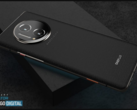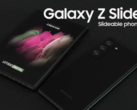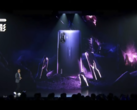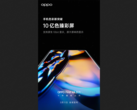Many Android manufacturers have caught up in terms of crafting a system-wide dark mode for their smartphones in 2021 (as has Apple); which is just as well as it is also an often-touted feature of the coming major software upgrade, and may even be used to help promote the Pixel 6 series on its launch. The option has become perceived as advantageous in terms of battery consumption by many users, as well as easier on the eyes when using their increasingly prized and, thus, ubiquitous AMOLED displays.
However, Purdue University researchers, Pranab Dash and the school's Michael and Katherine Birck Professor of Electrical and Computer Engineering Charlie Hu included, set out to investigate the actual effect of dark mode on battery use in AMOLED smartphones in order to test out the common preconception that it does indeed boost screen-on time.
Their findings were interesting, as they concluded that using a phone set to 100% brightness with dark mode on resulted in power-use reductions of 39% to 47% compared to the same conditions with light mode on. Reduce the brightness to between 30% and 50% at all times, however, and these savings fell to 3-9%.
Therefore, based on those findings, it seems dark mode does not particularly benefit time between charges during what might constitute normal everyday use. However, turn the brightness up in a sustained manner, and it might start to have more of a point.
On the other hand, this experiment was conducted in laboratory conditions with a limited gamut of variables. The Purdue engineers ran their tests using "6 of the most-downloaded apps on Google Play": Calculator; Google Maps; Google Calendar; Google News; Google Phone, and YouTube. They ran on a select number of models chosen from different ends of the AMOLED-on-phones timeline: the more up-to-date Pixels 5 and 4, joined by the Pixel 2 and the Motorola Moto Z3, without a relevant iPhone in sight.
The researchers also developed their own tool with which to test battery usage: the new Per-Frame OLED Power Profiler. Then again, they claim it is more accurate than other current apps (or native OS trackers) that apparently do not take the demands of content currently viewed on-screen into account when calculating power used over time.
Therefore, Hu and this team now plan to develop a new app, Android Battery+, based on this work. They have also recently presented their findings at the 2021 ACM International Conference on Mobile Systems (or MobiSys 2021).












